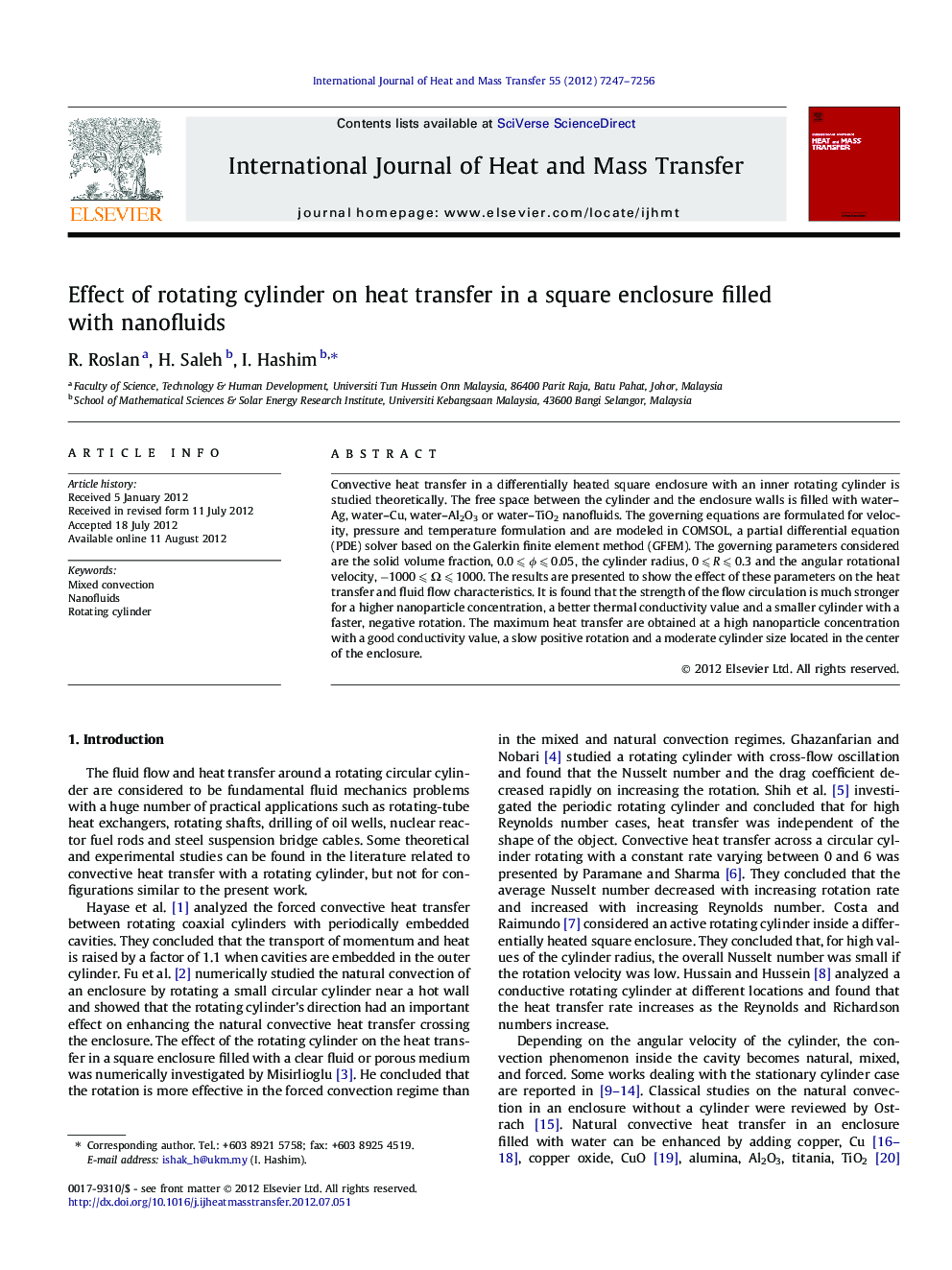| Article ID | Journal | Published Year | Pages | File Type |
|---|---|---|---|---|
| 658755 | International Journal of Heat and Mass Transfer | 2012 | 10 Pages |
Abstract
Convective heat transfer in a differentially heated square enclosure with an inner rotating cylinder is studied theoretically. The free space between the cylinder and the enclosure walls is filled with water-Ag, water-Cu, water-Al2O3 or water-TiO2 nanofluids. The governing equations are formulated for velocity, pressure and temperature formulation and are modeled in COMSOL, a partial differential equation (PDE) solver based on the Galerkin finite element method (GFEM). The governing parameters considered are the solid volume fraction, 0.0 ⩽ Ï ⩽ 0.05, the cylinder radius, 0 ⩽ R ⩽ 0.3 and the angular rotational velocity, â1000 ⩽ Ω ⩽ 1000. The results are presented to show the effect of these parameters on the heat transfer and fluid flow characteristics. It is found that the strength of the flow circulation is much stronger for a higher nanoparticle concentration, a better thermal conductivity value and a smaller cylinder with a faster, negative rotation. The maximum heat transfer are obtained at a high nanoparticle concentration with a good conductivity value, a slow positive rotation and a moderate cylinder size located in the center of the enclosure.
Related Topics
Physical Sciences and Engineering
Chemical Engineering
Fluid Flow and Transfer Processes
Authors
R. Roslan, H. Saleh, I. Hashim,
